It seemed like a fairy-tale beginning but ended in tragedy. Here's the timeline of Prince Charles and Princess Diana's ill-fated relationship.
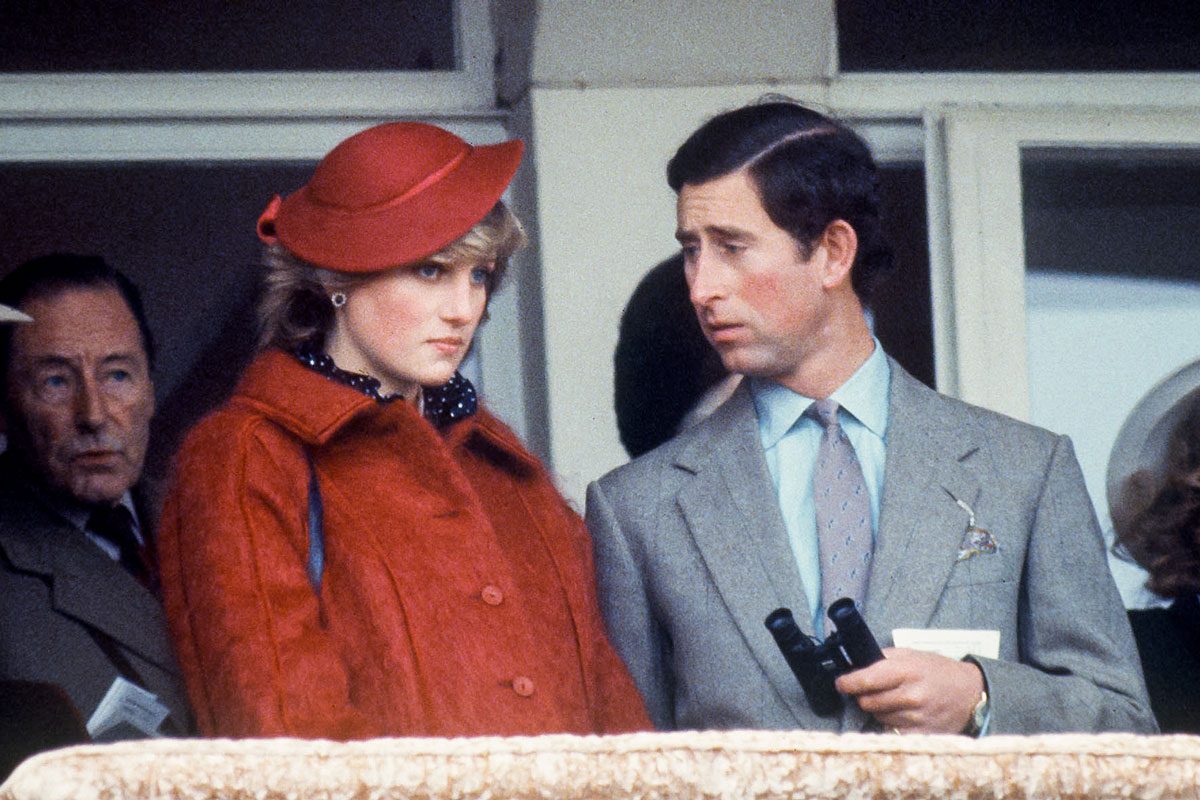
What Really Happened Between Charles and Diana?

It was the wedding of the century: A picture-perfect princess arrived in a gilded carriage, stepping out to reveal a train that flowed the length of the steps to the church where she would marry her Prince Charming. It should have been the happiest day of their lives, but Diana later called it “the worst” and almost didn’t go through with it. And Charles felt they were mismatched. So what really happened between Prince Charles and Diana, Princess of Wales, and were they ever actually in love?
Under that romantic veneer were two people who were never really right for each other, pushed together by duty and fantasy. “With hindsight, the marriage was doomed from the start due to the many differences between Charles and Diana,” says royal historian Marlene Koenig, author of Queen Victoria’s Descendants. And as we all know, it did not end in a happily ever after for them.
Reader’s Digest spoke with Koenig and investigative historian Tony McMahon to go behind the fairy-tale facade and get a better understanding of the royal couple’s ill-fated marriage. Read on for all the details and a timeline of the relationship between Princess Diana and Prince Charles.
Get Reader’s Digest’s Read Up newsletter for more royals, etiquette, humor, cleaning, travel, tech and fun facts all week long.
How did Charles and Diana meet?
Prince Charles and Diana Spencer met through Diana’s older sister, now Lady Sarah McCorquodale, in November 1977—when Charles and Sarah were dating. The prince had come to visit Sarah at the Spencer’s family estate, Althorp, as Diana recounted in her engagement interview. “We sort of met in a plowed field,” she said.
Charles and Sarah’s relationship didn’t last long. “The romance fizzled quickly because Sarah was not in love with Charles,” Koenig says. Sarah expressed no hard feelings when Charles and Diana began dating nearly three years later. “I introduced them. I’m Cupid,” she told the Guardian in 1981.
What was the timeline of Charles and Diana’s relationship?
July 1980
A couple of years after their initial meeting, 18-year-old Diana met Charles again at a gathering at a friend’s house in Sussex, England. In tapes Diana made for Andrew Morton’s 1992 book, Diana: Her True Story, that have since become public, Diana said of the meeting: “He chatted me up” and “was all over me like a bad rash.”
Despite his hasty actions that night, Charles and Diana started dating. “There was the assumption of love, certainly at the beginning,” Koenig says of the couple. However, “right from the start, there was a slight awkwardness between them. He had that typical royal reticence to express his feelings,” says McMahon.
August and September 1980
Diana visited Balmoral Castle in Scotland, where Queen Elizabeth resided in late summer. Diana underwent the “Balmoral test” (as seen in The Crown), in which the queen and the royal family checked her out to see if she was worthy of the stamp of approval … and she was.
“She had all the right DNA—daughter of an earl,” Koenig says, noting that Diana’s father served as the queen’s equerry, and her grandmothers were close with the queen mother (Charles’s grandmother). “All the great connections led to Diana being invited to Scotland in August 1980.”
There was also considerable pressure on Charles to get married, Koenig says. As the heir to the throne, he would also need an heir himself to pass the crown to. “He was starting to look like a fun-loving bachelor,” McMahon adds.
February 24, 1981
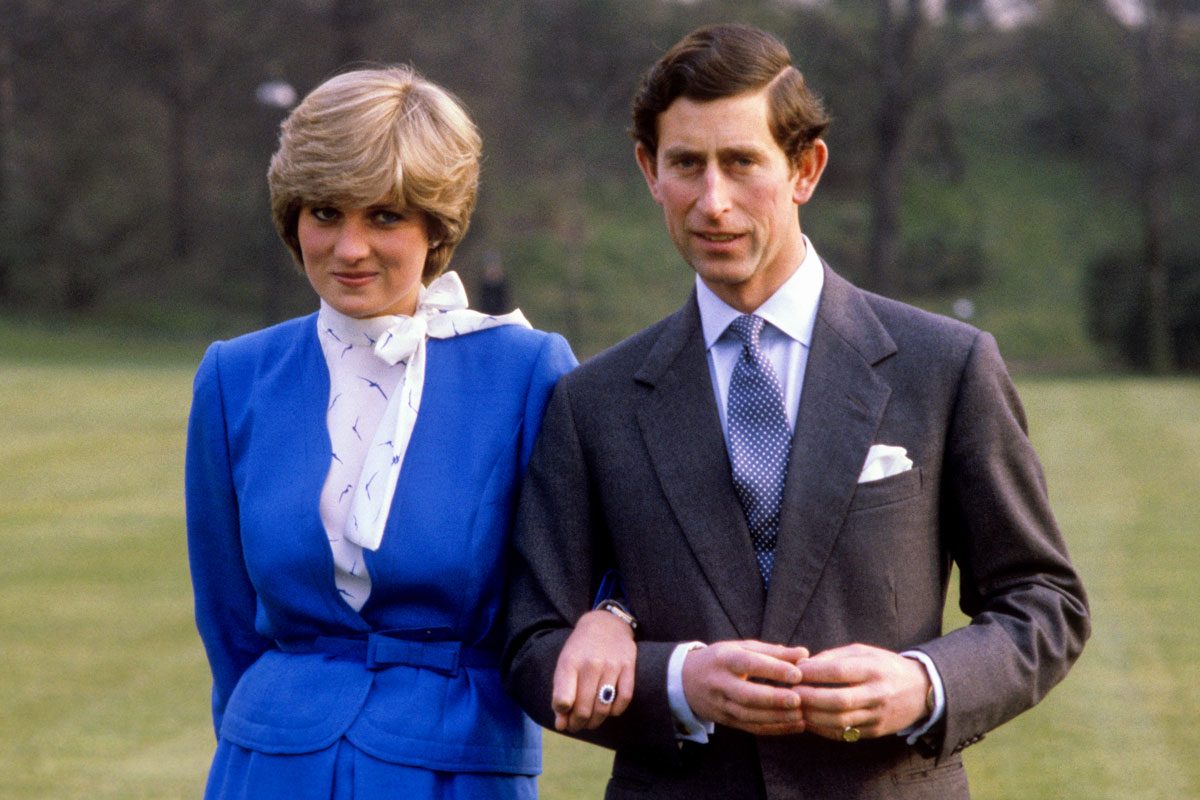
After meeting just 13 times, Charles and Diana’s engagement was announced. “Diana was only 19 when they got engaged—six months after the press spotted her at Balmoral,” Koenig says. “This was not enough time for a young woman to prepare mentally and emotionally for a life-changing event: marriage to the heir to the throne.”
In a sense, it was an arranged marriage, Koenig says. “Hindsight being 20/20, we can now see the mistakes made due to the lack of a genuine courtship,” she says. “Charles and Diana never truly dated, and this lack of courtship was a significant hindrance.”
The newly engaged couple was interviewed on television, an experience Diana called “ghastly” in the Morton tapes. In the interview, when asked if the two were in love, Diana responded, “Of course,” while Charles ominously added, “Whatever ‘in love’ means.'”
This quite upset Diana. “That threw me completely. What a strange answer. Absolutely traumatized me,” she said in the Morton tapes.
July 29, 1981
Charles married Diana, who became Princess of Wales, at St. Paul’s Cathedral in London. The wedding was a huge spectacle. “In 1981, a year of riots and economic depression, the British people were in the mood for a big royal bash,” McMahon says. The wedding was watched by 750 million people around the world. “The fairy-tale marriage of 1981 appeared to be a match made in heaven,” McMahon says. “The whole country believed that these two royals were made for each other.”
But behind the scenes, all was not well. “Diana already knew that Charles still had feelings for Camilla Parker-Bowles, a former lover,” McMahon says. Camilla had not been considered a suitable match for Charles because she had a dating history (in other words, she wasn’t virginal) and she wasn’t aristocratic.
According to Diana’s longtime astrologer, Penny Thornton, the night before the wedding Charles told Diana he didn’t love her, in an attempt to get everything out in the open before they walked down the aisle. “It was devastating for Diana,” Thornton said in the documentary The Diana Interview: Revenge of a Princess. “She didn’t want to go through with the wedding.” Unfortunately, it was too late to call it off. As Diana’s sister famously said, her face was already on the tea towels.
As Diana walked up the aisle, she saw Camilla among the attendees. It was “the worst day of my life,” she said in the Morton tapes.
November 6, 1981
Not even four months after their wedding, Charles and Diana announced she was expecting the future heir to the throne. But even with this happy news, things were already going downhill for the mismatched couple. “Diana was far more mercurial in her personality than Charles. The press loved her, but she truly did not understand her role as Princess of Wales,” Koenig says. “The cracks in the marriage began within weeks.”
McMahon adds: “It was very obvious to journalists that Diana’s enthusiasm and affection were often not matched by her more reserved husband. From their earliest outings together, something held Charles back from showing total loving commitment.”
Diana had already begun her battle with bulimia as well as depression. By the time her pregnancy was announced, “she was in emotional crisis,” says Koenig.
As Diana said in the Morton tapes of her behavior: “You are not emotionally stable when you throw yourself down the stairs in the early months of a pregnancy.”
June 21, 1982
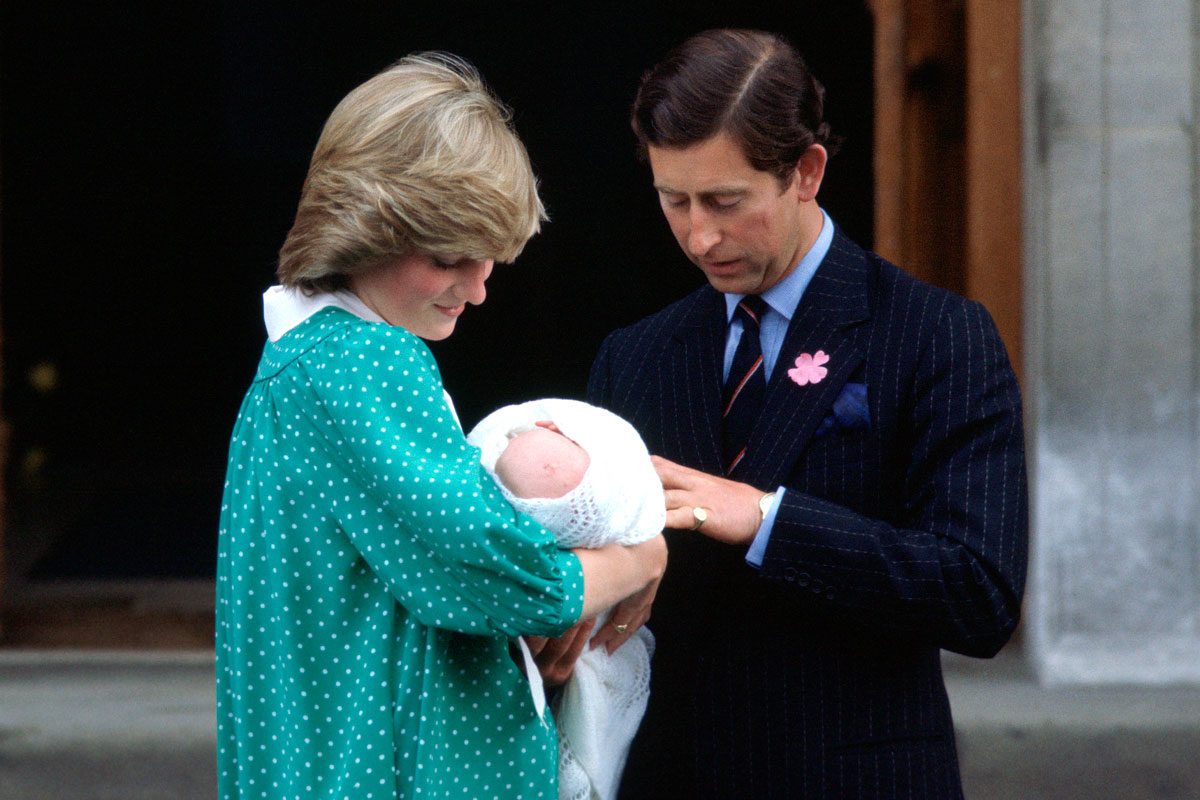
Diana gave birth to Prince William. She was the first British royal to give birth in a hospital, the Lindo Wing of St. Mary’s in Paddington, instead of at the palace. Future royals Kate Middleton and Meghan Markle have since followed suit.
Unfortunately, Diana’s happiness at the birth of her son didn’t last long, as she suffered from postpartum depression. “Boy, was I troubled. If Charles didn’t come home when he said he was coming home, I thought something dreadful had happened to him. Tears, panic, all the rest of it,” she said in the Morton tapes.
September 15, 1984
Diana had her second child, Prince Harry. She now had “an heir and a spare,” as the saying (and inspiration for Harry’s future book title, Spare) goes, and so had fulfilled her royal duty. “The birth of Prince Harry seemed to bring them closer together for a while, but this was short-lived,” McMahon says of Charles and Diana.
1986
In 1986, both Diana and Charles had affairs, they later admitted. “1986 was the year that both decided to start leading separate love lives,” McMahon says. Charles’s was with, of course, Camilla Parker-Bowles, who was also married.
Diana, though, also had begun dalliances with several men. “If she thought these affairs were a secret, that’s unfortunate. Because they were the talk of bars and pubs across the land,” McMahon says. “The ‘fairy-tale’ description of the royal wedding looked like nonsense by the middle of the ’80s.”
1987–1992
As rumblings of trouble between Charles and Diana intensified, the press became a huge factor in stirring up public interest in the couple’s lives. “The breakdown of the wedding gave the tabloids, especially, a field day. The 1980s was the high point of influence for the Sun, News of the World and the Daily Mirror,” McMahon says of the British press. “And they fed off royal scandal—much of which was fed to them by rival camps within the royal family. There was a perception that Charles and Diana had sophisticated PR operations giving journalists different spins.”
December 17, 1989
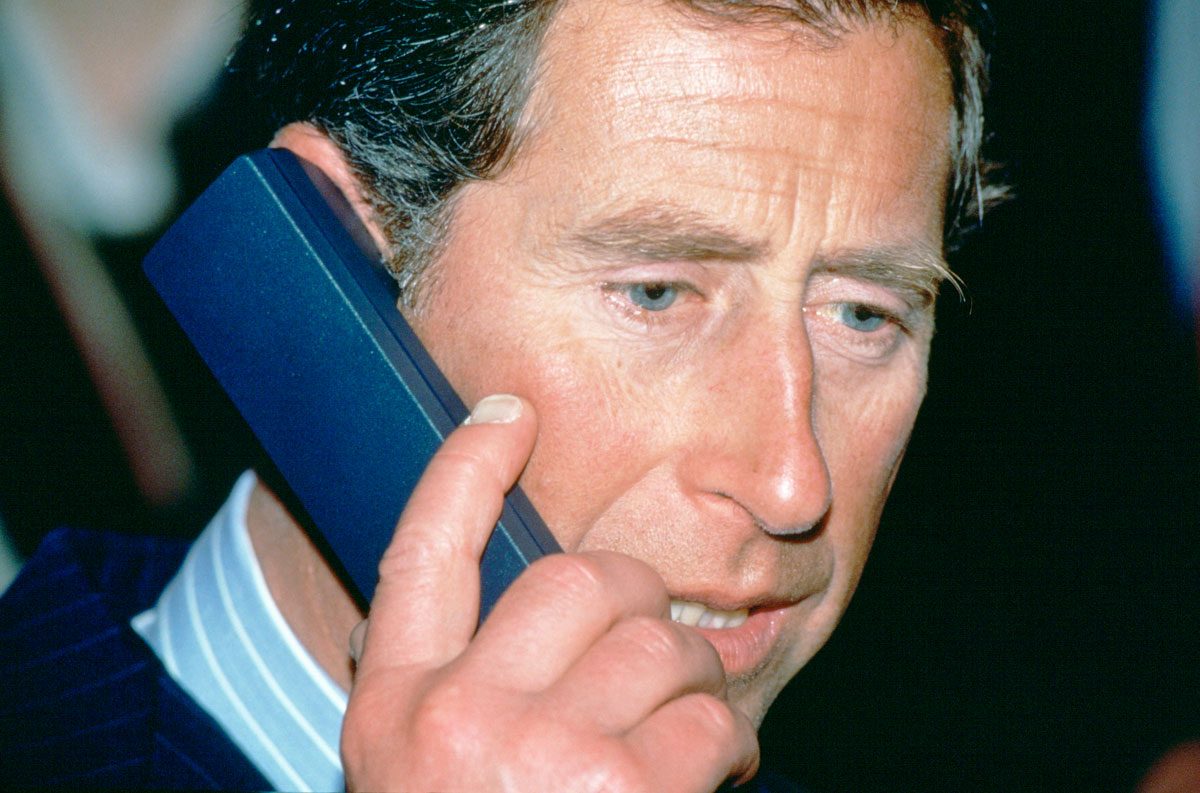
Charles and Camilla were secretly recorded having a very intimate conversation, in which the prince said he wanted to “live inside her trousers,” joking that he would be a tampon. Although the scandal, called “Tampongate” or “Camillagate,” didn’t break in the British press until January 1993, it’s clear from the call that they were very much in love. “To most people, this confirmed that his heart had always been with Camilla and not Diana,” McMahon says.`
June 1992
The rumors of a rift between the prince and princess were confirmed with the publication of Andrew Morton’s tell-all book, Diana: Her True Story, in 1992. It wasn’t until after her death, though, that Morton revealed she had secretly cooperated with the book, recording audio and videotapes at her home in Kensington Palace and smuggling them to the author through a friend. Through those tapes, we know what really happened—or, at least, Diana’s perception of it.
December 9, 1992
Queen Elizabeth famously dubbed 1992 as her “annus horribilis,” or horrible year, in part because of the announcement on this day that the Prince and Princess of Wales would be separating. However, the statement specified the couple had “no plans to divorce.”
“For the public, it reconfirmed the royal family as a bit dysfunctional,” McMahon says. In addition to Charles and Diana, Prince Andrew and Sarah Ferguson split, as did the queen’s sister, Princess Anne, and her husband, in the same year.
June 29, 1994
Charles decided to tell his side of the story in a television interview with Jonathan Dimbleby, who went on to publish the future king’s authorized biography, The Prince of Wales. Although Charles attempted to stress how he had tried to make it work with Diana, the bombshell that would capture the public’s attention was that he was faithful to his wife only “until it became irretrievably broken down, us both having tried.” The public already knew about his affair from Morton’s book, but it was another thing to see Charles admit to it. “This was not really news, although Charles stated his infidelity on national television,” Koenig says.
His adultery admission backfired, and his popularity tanked further—despite the fact that Diana had also been unfaithful. As for the princess, on the night of the interview, Diana attended an event wearing a sexy, off-the-shoulder black dress, later dubbed the “revenge dress.”
In Dimbleby’s book, published later that year, Charles revealed that his father, Prince Philip, pushed him into the marriage, even though he didn’t love Diana.
November 20, 1995
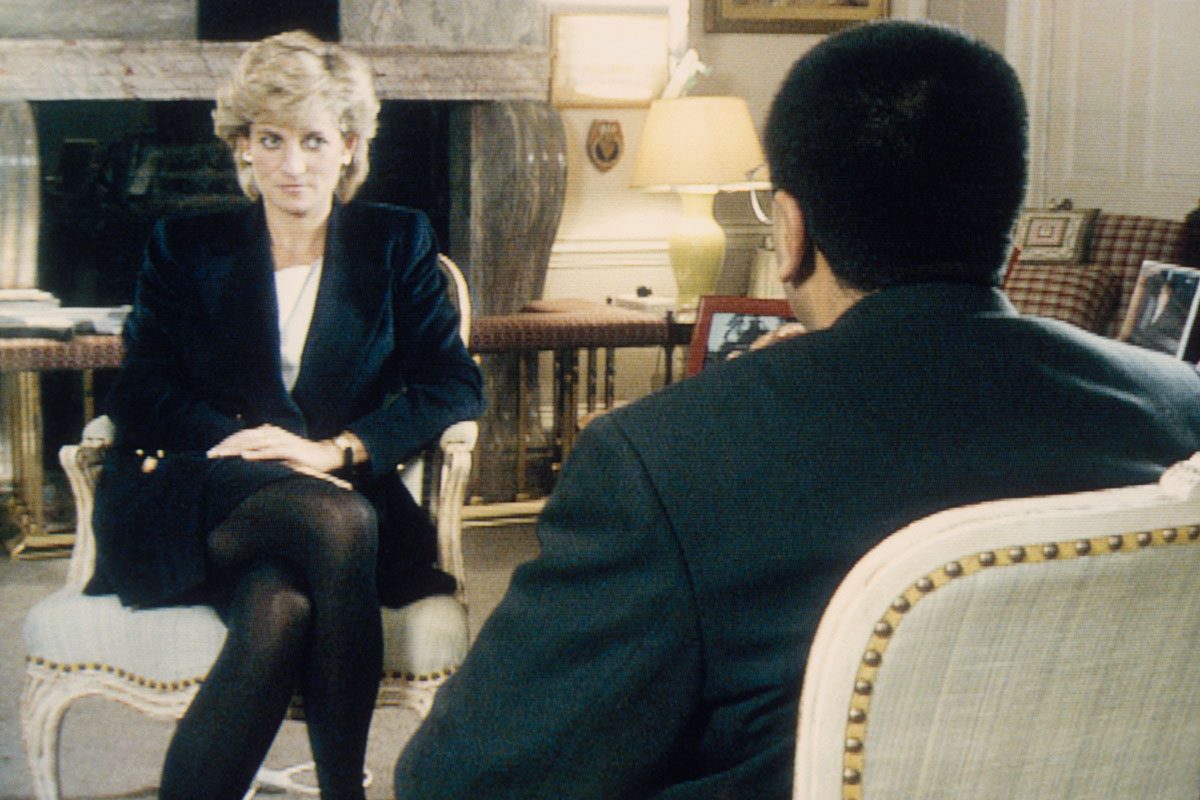
Now it was Diana’s turn to admit adultery on television, in her BBC Panorama interview with Martin Bashir (who later admitted to using unethical means to get the princess to do the interview). In addition, Diana also talked about her eating disorder and mental-health struggles: The bulimia, she said, “was a symptom of what was going on in my marriage. I was crying out for help.”
She also famously discussed how Charles’s relationship with Camilla led to the separation: “Well, there were three of us in this marriage, so it was a bit crowded.”
As Koenig explains, “the interview was designed to denigrate Charles and make it appear that he was not suited to be king.” Diana earned the public’s sympathy and blamed Charles.
A few weeks later, on December 10, Charles and Diana’s divorce was announced.
August 28, 1996
After several months of hashing out the terms of their divorce settlement, Charles and Diana’s divorce was finalized. Although she was allowed to remain “Princess,” her HRH (“Her Royal Highness”) title was taken away.
“Once Charles and Diana were divorced, some of the tension in their relationship dissipated,” McMahon says. Finally free to go their separate ways, Diana and Charles embarked on new paths.
August 31, 1997
Almost exactly one year after her divorce was finalized, a whirlwind summer romance with Dodi Al Fayed, the son of an Egyptian billionaire, brought Diana to the Ritz Hotel in Paris. After leaving the hotel, the car the pair were riding in was chased by paparazzi hoping to get photos. The driver, Henri Paul, had been drinking and drove the car at an unsafe speed, losing control in a tunnel, killing Diana, Fayed and Paul. Diana’s bodyguard, Trevor Rees-Jones, survived.
After Diana’s death, a devastated Charles flew to Paris to bring her body back to England for her funeral, which, like her wedding, was watched around the world—this time, by 2.5 billion people.
Were Charles and Diana ever truly happy?
Although the early days of their courtship appeared “very romantic,” McMahon says, it doesn’t seem Charles and Diana were ever happy in the sense of two people who were both truly, and equally, in love with each other. Both Charles and Diana spoke about wanting the marriage to work, but it simply did not, because of their personality differences and Charles’s unending love for Camilla.
In these ways, the marriage never had a chance. “More should have been done by Diana’s family to discourage a relationship with Charles, but this was not going to happen because the marriage was a feather in the cap for the Spencer family,” Koenig says. Charles, likewise, was pressured by his family to select a suitable bride who would, it was thought, one day be queen.
“Charles and Diana were needy, but neither could meet the other’s needs,” Koenig says.
How long were Charles and Camilla having an affair?
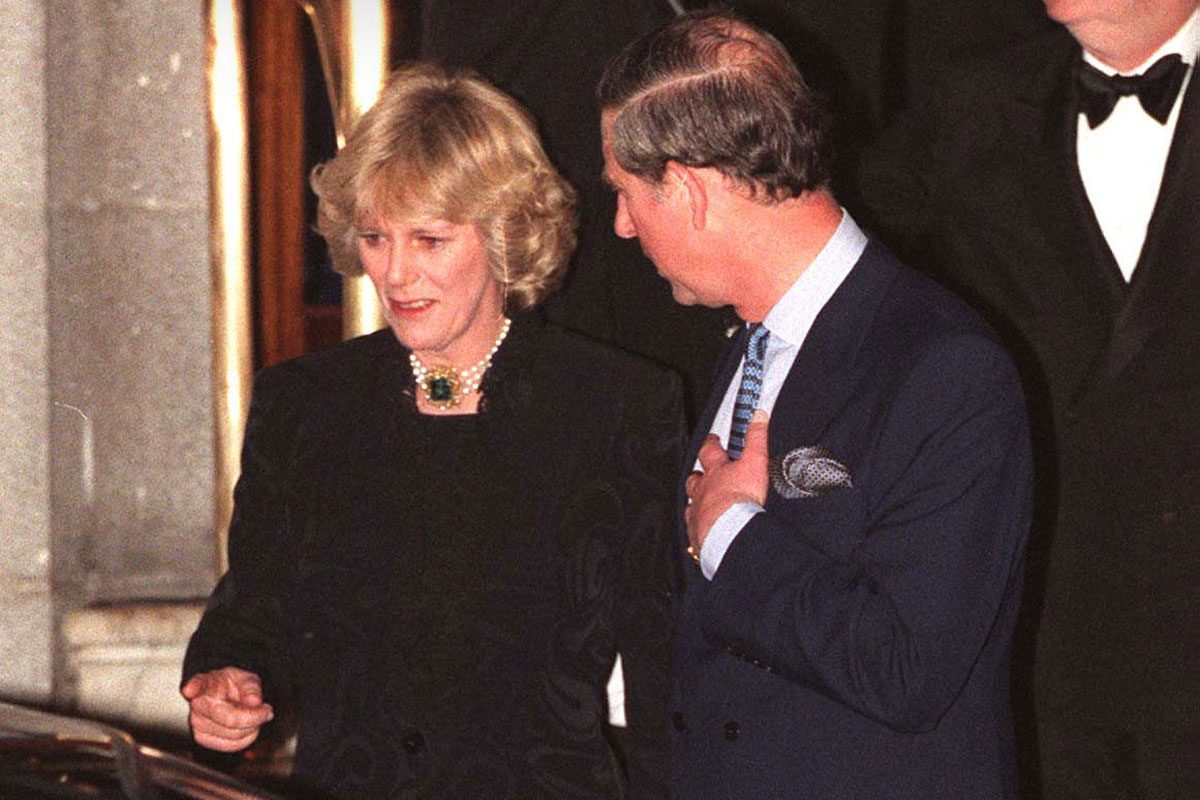
Charles and Camilla had been on-again/off-again since they met in 1970, though it had ended by the time Charles and Diana wed in 1981. That said, he and Camilla picked up in 1986, when it became clear his marriage wasn’t working.
But Charles and Camilla had continued to be in the same circles during his marriage to Diana, so she was never far from his mind. Even if they didn’t have a physical relationship, Charles was still in love with her. “He had one love, and Charles should have married Camilla,” Koenig says. “Their love remained and grew stronger.”
Some might say the fairy tale belongs to Charles and Camilla. After Diana’s death, the couple began easing back into the public eye. They finally wed in a civil service on April 9, 2005, more than 30 years after their first meeting. Following Queen Elizabeth’s death on September 8, 2022, they became King Charles III and Queen Camilla.
Did Diana also have affairs?
Diana admitted to several affairs throughout her tumultuous marriage. “There were more than three people in the marriage,” Koenig says.
Barry Mannakee
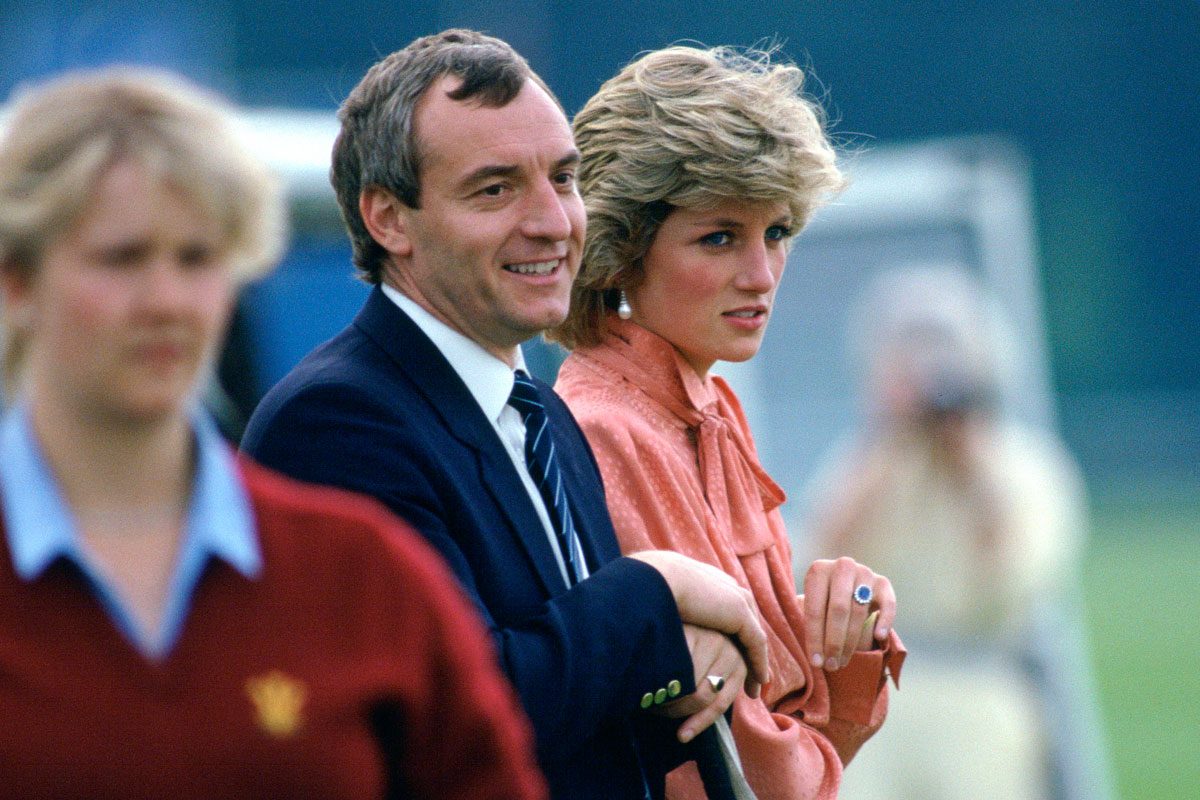
In the Morton tapes, Diana talks about her first affair, with bodyguard Barry Mannakee, “When I was 24, 25, I fell deeply in love with somebody who worked in this environment [the palace], and it was all found out and he was chucked out, and then he was killed, and that was the biggest blow of my life, I must say,” Diana said.
Mannakee died in a motorcycle accident in 1987. Diana called him “the greatest love I’ve ever had.”
James Hewitt
In 1986, Diana began an affair with captain of the guard James Hewitt, which she admitted to in the Panorama interview. In speaking of Hewitt by name, Diana was asked if she was unfaithful with him, to which she replied, “Yes, I adored him. Yes, I was in love with him. But I was very let down.” After their relationship, Hewitt was a major source in the tell-all book Princess in Love. “I was absolutely devastated when this book appeared, because I trusted him,” Diana said.
James Gilbey
During the Panorama interview, Diana was also asked about two other men she’d been linked to, but she denied being involved with them. The first was media executive James Gilbey, with whom she had a phone call in 1989 that was secretly recorded and later leaked to the press. Although nothing was directly said to confirm an affair, the call featured kissing sounds and Gilbey calling Diana “Squidgy” repeatedly, leading to the call being dubbed “Squigygate.” In Panorama, Diana admitted to the call, but said it was a purely innocent conversation with a friend.
Oliver Hoare
Diana was also asked in Panorama about married art dealer Oliver Hoare, who received hundreds of nuisance hang-up calls. She admitted to calling and hanging up “a few times, but certainly not in an obsessive manner, no.”
Hasnat Khan
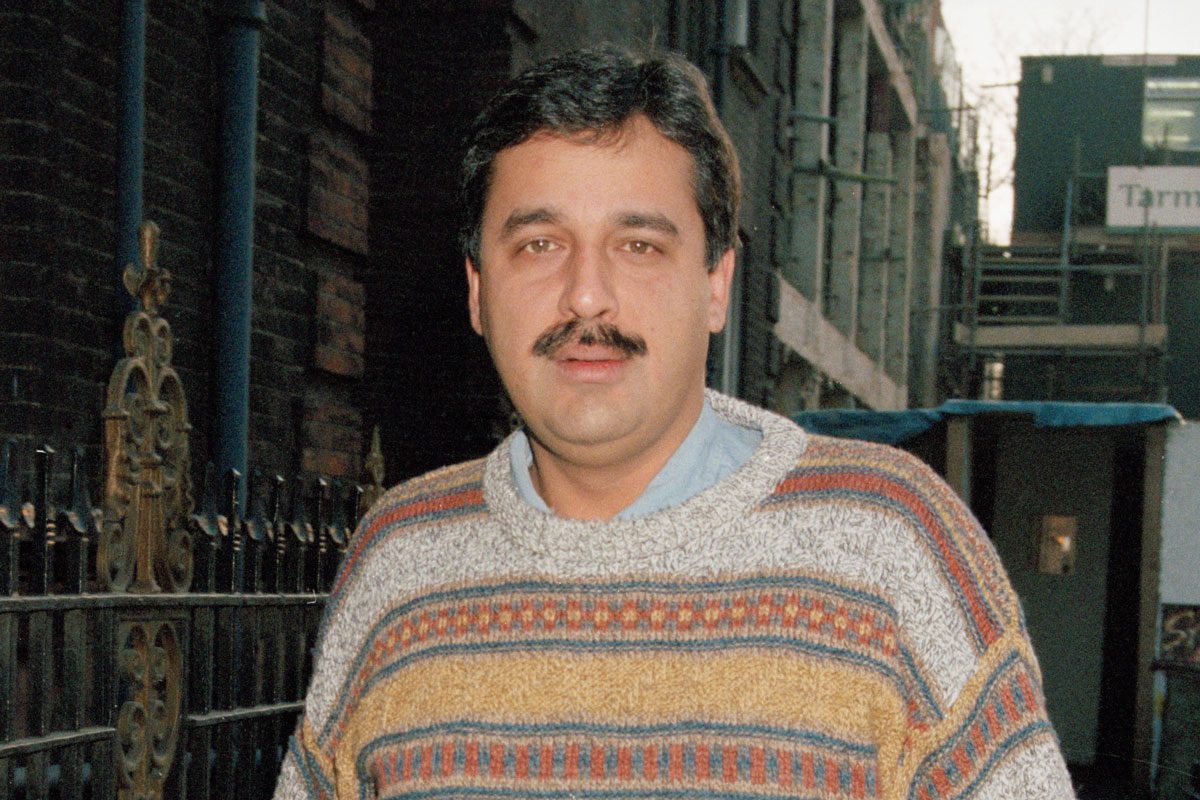
After Diana’s separation, she was involved with heart surgeon Hasnat Khan. “She was head over heels in love with him, albeit perhaps a bit obsessed, as she went to Pakistan to meet his family,” Koenig says. “Diana wanted to marry him very much.” When Khan was interviewed as part of a 2004 inquest into Diana’s death, he revealed that the relationship had lasted from 1995 to 1997, with “no personal problems.” The two had talked about marriage, but Khan realized he couldn’t have a “normal” life as Diana’s husband.
Around the time of their breakup, Diana began her ill-fated relationship with Dodi Al Fayed in July 1997.
What was the final breaking point of Charles and Diana’s marriage?
Privately, the breaking point came in 1986 when Charles and Diana both started affairs. “By 1986, their marriage was over—both were unfaithful by then,” Koenig says. “[Charles and Camilla’s] affair began in the fall of 1986, confirmed by Morton in his book, which also confirmed that Diana’s affair with James Hewitt started in the summer of 1986.”
Publicly, the release of Diana: Her True Story in 1992 revealed these details, and it preceded the couple’s official split later that year.
Koenig says the other pivotal moment was the Panorama interview in November 1995, which led to the official divorce announcement less than a month later.
Did Charles ever apologize to Diana?
We can’t know what was said behind closed doors, but McMahon doesn’t think so. “It’s clear that Charles never formally apologized to Diana for his conduct because he didn’t believe that he had done anything wrong. In all his comments, he merely states that the two were incompatible,” McMahon says. “Charles did acknowledge the pain in their marriage but never claimed to be in the wrong.”
Charles likely saw both himself and Diana as victims of the royal system, because they were both pushed into the union—despite his still having feelings for Camilla, and despite Diana’s youth, naivete and unpreparedness to take on the role. In a letter to a friend quoted in Dimbleby’s biography, Charles described feeling trapped, saying the marriage “had all the ingredients of a Greek tragedy.”
Still, Diana “couldn’t forgive him for the love he had borne Camilla throughout their marriage,” McMahon says.
How did Charles react to Diana’s death?
As told by eyewitnesses to author Christopher Andersen for his book, The King: The Life of Charles III, Charles was extremely upset when he heard the news of her death, and when he viewed her body, he let out a “howl of anguish” at the loss of his ex-wife and his children’s mother. “Charles was devastated by the death of Diana in such terrible circumstances,” McMahon says. “For a man that many thought was incapable of emotion, Charles reportedly wept openly and uncontrollably. What he showed was that despite everything that had passed between them, there was respect and affection.”
Charles hasn’t said too much publicly about Diana’s death. His first public engagement three weeks after she died, in Manchester, England, was one of the only times he’s talked about it. “I wanted to say how particularly moved and enormously comforted my children and I were, and indeed still are, by the public’s response to Diana’s death,” he said.
“I think as probably many of you will know from the experience of family loss perhaps in your own lives, it is inevitably difficult to cope with grief at any time, but perhaps you might realize it’s even harder when the whole world is watching at the same time,” he continued. “I can’t tell you how enormously grateful and touched both the boys and I are. Also, I’m unbelievably proud of the children, William and Harry.”
In a letter that went up for auction in August 2024, Charles wrote to a friend who had also lost a loved one. He described an “unbearable emptiness” after someone close to you has died. The letter was dated December 8, 1997, just a few months after Diana’s death.
About the experts
|
Why trust us
Reader’s Digest has published hundreds of stories on the British royal family, providing a behind-the-scenes look at the fascinating facets of the monarchy. We regularly cover topics including the latest royal news, the history and meaning behind time-honored traditions, and the everyday quirks of everyone’s favorite family members, from Queen Elizabeth’s daily snack to Prince William’s confessions about his home life. We’re committed to producing high-quality content by writers with expertise and experience in their field in consultation with relevant, qualified experts. We rely on reputable primary sources, including government and professional organizations and academic institutions as well as our writers’ personal experiences where appropriate. For this piece on what really happened between Charles and Diana, Tina Donvito tapped her experience as a longtime journalist who covers history, travel, entertainment and the British royal family for Reader’s Digest. We verify all facts and data, back them with credible sourcing and revisit them over time to ensure they remain accurate and up to date. Read more about our team, our contributors and our editorial policies.
Sources:
- Marlene Koenig, historian and author of Queen Victoria’s Descendants; email interview, May 2025
- Tony McMahon, historian; email interview, May 2025
- The Guardian: “Charles ‘amazed’ by Lady Di’s yes”
- YouTube: “Princess Diana’s Engagement Interview”
- YouTube: “Diana: In Her Own Words”
- Daily Motion: “The Diana Interview: Revenge of a Princess”
- Facebook: “Princess Diana Panorama full interview with Martin Bashir”
- PBS: “Panorama Interview Transcript”
- BBC News: “In Quotes: Surgeon on Diana Affair”
- People: “King Charles Wrote of ‘Unbearable Emptiness’ in Unearthed Letter Written Months After Princess Diana’s Death”
- YouTube: “Prince Charles Speaks Publicly for the First Time Since Diana’s Death”






















